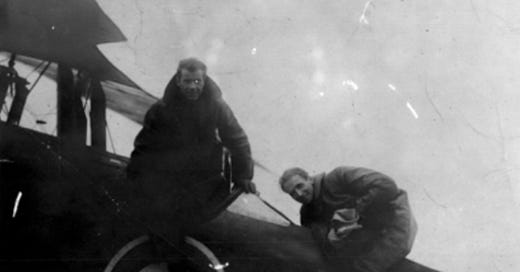After the First World War, Canada was full of pilots and would-be pilots who wanted to leave their mark on history.
Some were war heroes who took to the air in France like Wop May and Billy Bishop. They helped build the commercial air industry in Canada after the war, and left a huge impact on Canadian aviation.
In 1919, the Canadian Air Board was formed as a department of the Dominion Government. It was created to develop rules and regulations over aviation in Canada, and help build the country’s aviation industry both civilian and military.
One of the first tasks for the board was to prove that flight in Canada was viable. The senior staff of the Canadian Air Board, most of whom were veterans of the First World War, decided to do that with a grand event.
The first flight across Canada.
In August 1920, approval was given for a transcontinental flight, which would not use one aircraft, but a series of aircrafts from Halifax to Vancouver.
There were three branches within the Air Board, and all three would have a part in the momentous event. The Certificates Branch took care of the ground facilities, while the Flying Operations Branch oversaw the flight from Halifax to Winnipeg. The Canadian Air Force took over from Winnipeg to Vancouver.
Test flights around Montreal in September 1920 helped crews determine the ranges of the planes. After some weather delays, two men, Squadron Leader Hobbs and his co-pilot Air Commander Tylee got ready to leave. Letters from mayors across the country were loaded into the plane and it took off from Halifax. on Oct. 7 at 8 a.m.
Turbulent weather caused problems over the Bay of Fundy, leading to severe damage to the plane. The damage was so bad it had to be replaced in Fredericton. The men then took off and continued on their way. After stops in Riviere-du-Loup, Sault Ste. Marie and Kenora, the plane came in for a landing in Winnipeg. Fog, a leaky radiator and poor weather were all problems they dealt with.
From Winnipeg to Regina, Flight Lt. Home-Hay was the pilot for Tylee. The plane stopped in Regina due to engine trouble, and then continued on to Medicine Hat and finally Calgary. From Regina to Calgary, Flight Lt. Cudemore was Tylee’s pilot.
During all this time, the planes were swapped out for fresh ones at each stop.
From Calgary to Vancouver, it was Flight Lt. Thompson in the pilot’s seat. He had to deal with significant problems due to the altitude the plane had to fly to get over the mountains, and poor weather that hammered the plane. At various times they had to turn around and go a different way due to snowstorms.
It took several days of detours and landings on ranches just to make it to Merritt, B.C.
Finally, on Oct. 17, the plane touched down in Richmond, British Columbia where the Mayor of Vancouver, R.H. Gale, greeted the men and received the letters.
The flight covered 5,400 kilometres in 10.5 days involving 49 hours of flying time.






